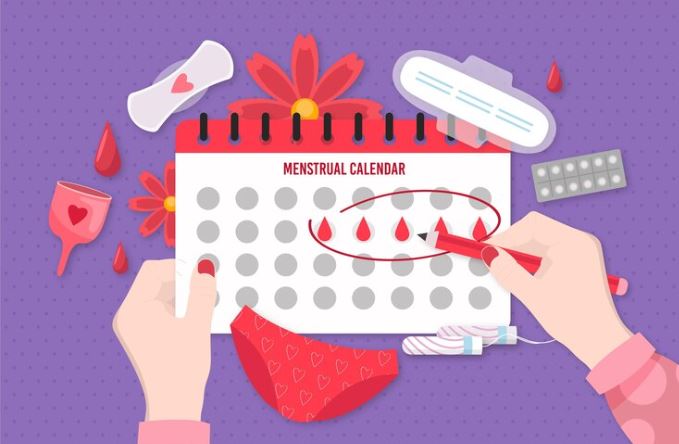2 Essential Tools Every Female Should Use
Taking charge of your reproductive health is important to your personal well-being. For women, knowing their body’s natural cycles is important for family planning or staying informed. Two helpful tools for this are the ovulation calculator and the pregnancy calculator.
These resources offer important information about fertility and pregnancy, allowing women to make informed choices about their health.
Read this blog to understand the importance of tracking your reproductive cycle through these comprehensive tools.
What is an Ovulation Calculator?
An ovulation calculator is a simple and useful tool for identifying fertile windows. It estimates the days during the menstrual cycle when women are most likely to ovulate, which usually occurs 14 days before the beginning of the next period cycle.
How Does an Ovulation Calculator Work?
Using an ovulation calculator involves just a few inputs:
- Start Date of Your Last Period: This helps the tool determine the beginning of your cycle.
- Cycle Length: The average duration of your menstrual cycle, usually 28-30 days.
The calculator uses this information to estimate the fertile period and highlights the days when the chances of conception are higher.
By analysing this information, the tool predicts the ovulation window, usually occurring 12–16 days before the next period.
| Cycle Length | Estimated Ovulation Window |
| 28 days | Day 12 to Day 16 |
| 30 days | Day 14 to Day 18 |
| 32 days | Day 16 to Day 20 |
3 Key Benefits of Using an Ovulation Calculator
- Improved Family Planning: Whether trying to conceive or avoid pregnancy, knowing your fertile days gives you control over your decisions.
- Better Health Awareness: Tracking cycles helps identify irregular patterns that may require medical attention.
- Stress Reduction: Accurate predictions reduce guesswork and anxiety related to conception.
What is a Pregnancy Calculator?
A pregnancy calculator estimates the due date of delivery and the current stage of pregnancy. It works by analysing the LMP or the date of conception.
How Does a Pregnancy Calculator Work?
The pregnancy calculator provides information based on the standard pregnancy duration of approximately 40 weeks (280 days). It calculates:
- The due date.
- The start and end dates of each trimester.
- The expected date of conception.
3 Key Benefits of Using a Pregnancy Calculator
- Accurate Tracking: Track your pregnancy milestones with ease.
- Timely Appointments: You can plan prenatal check-ups and tests effectively.
- Enhanced Preparation: Stay informed about your baby’s development and any upcoming changes.
How Do Ovulation and Pregnancy Calculators Work Together?
These tools complement each other, providing women with a complete understanding of their reproductive health. For instance:
- Before Pregnancy: Use the ovulation calculator to identify your most fertile days.
- During Pregnancy: Switch to the pregnancy calculator for due date predictions and trimester tracking.
| Tool | Purpose | Benefits |
| Ovulation Calculator | Identifies fertile days | Supports conception or pregnancy planning |
| Pregnancy Calculator | Tracks pregnancy progress | Provides insights for prenatal care |
3 Factors Influencing Accuracy of Ovulation and Pregnancy Calculators
The calculators rely on certain data, so accuracy may vary based on the following:
- Regularity of Menstrual Cycle: Irregular period cycles can affect predictions.
- Input Precision: Entering accurate dates improves reliability.
- Health Conditions: Hormonal imbalances or medical conditions may impact results.
Things to Keep in Mind When Using Ovulation and Pregnancy Calculators
1. Know Your Cycle
Understanding your cycle’s length and regularity is important. Tools like an ovulation calculator work best when data is consistent.
2. Consult a Medical Professional
Although helpful, these calculators are not a replacement for professional advice. Consult a doctor for personalised insights, especially if facing irregular cycles or fertility concerns.
3. Combine Methods
Using multiple tracking methods, such as basal body temperature (BBT) monitoring or ovulation kits, can enhance accuracy.
Why Ovulation and Pregnancy Calculators Matter for Indian Women?
For Indian women, who often juggle professional and personal responsibilities, tools like the ovulation calculator and pregnancy calculator simplify health management. Whether planning for a child or understanding one’s cycle better, these calculators are practical, time-saving resources.
Common Misconceptions
| Myth | Reality |
| Calculators are 100% accurate. | Accuracy depends on data regularity. |
| They’re only for pregnancy planning. | They’re also useful for understanding cycles. |
| Professional advice isn’t needed. | Medical consultation is always recommended. |
How to Use These Tools Effectively?
- Track Regularly: Record menstrual cycles consistently for reliable results.
- Use Technology: Many apps provide access to an ovulation calculator and pregnancy calculator, making tracking easier.
- Stay Updated: Ensure you understand how your cycle affects the predictions.
Key Benefits of Proactive Health Management
By using these tools, women can:
- Plan pregnancies effectively.
- Identify potential reproductive health issues early.
- Feel confident in making better decisions about their health.
Tools Comparison at a Glance
| Feature | Ovulation Calculator | Pregnancy Calculator |
| Purpose | Predicts fertile days | Tracks pregnancy stages |
| Data Needed | LMP, cycle length | LMP, or conception date |
| Key Benefit | Supports pregnancy planning | Provides due date and trimester details |
With advancements in digital health, access to tools like the ovulation calculator and pregnancy calculator has never been easier. These tools assist women with the knowledge needed to manage their reproductive health confidently.
Understanding how these calculators work can lead to better health decisions and improved outcomes. Simple yet effective, they are invaluable for women who want to take charge of their reproductive journey.







